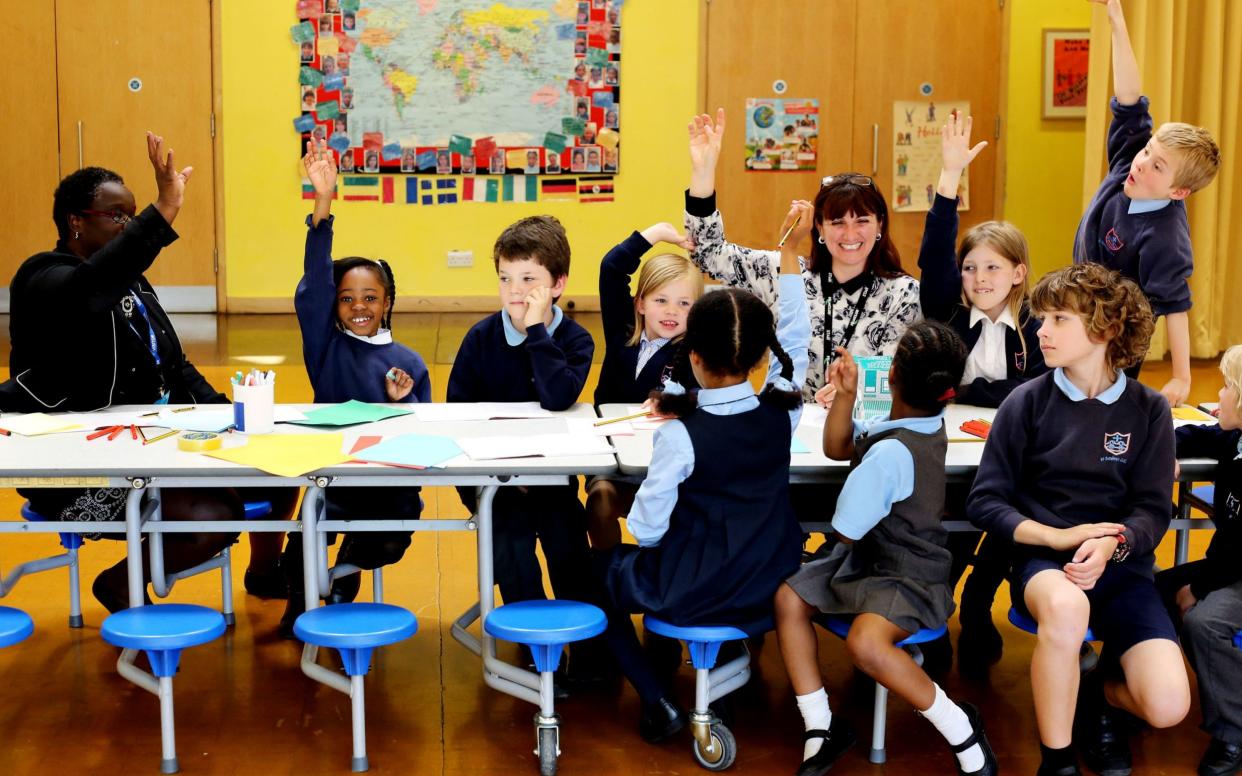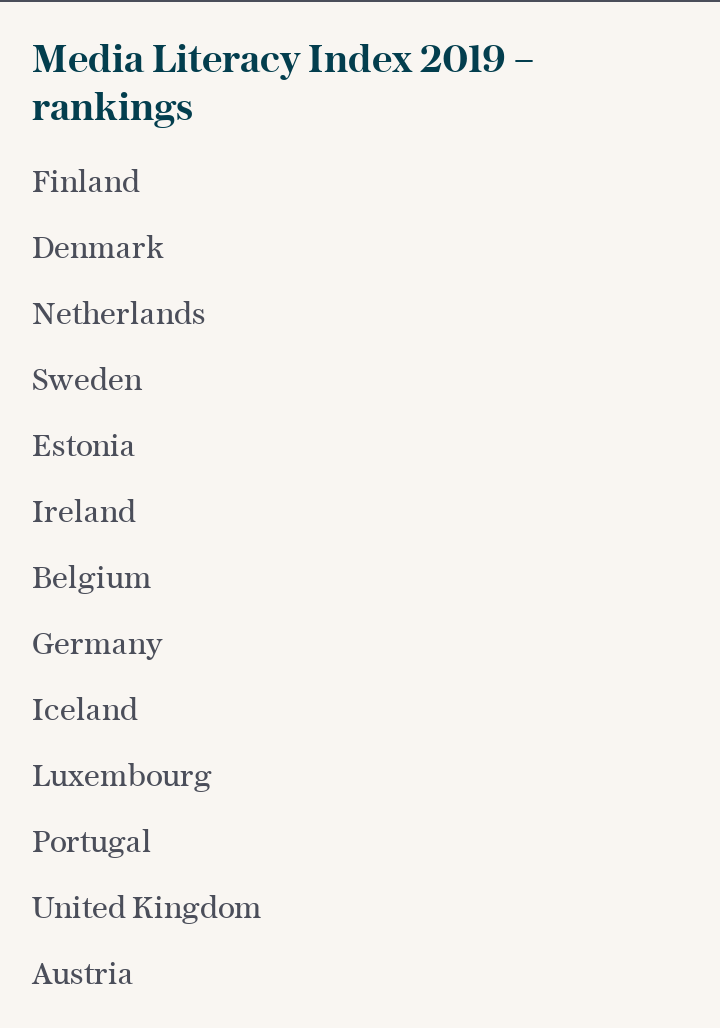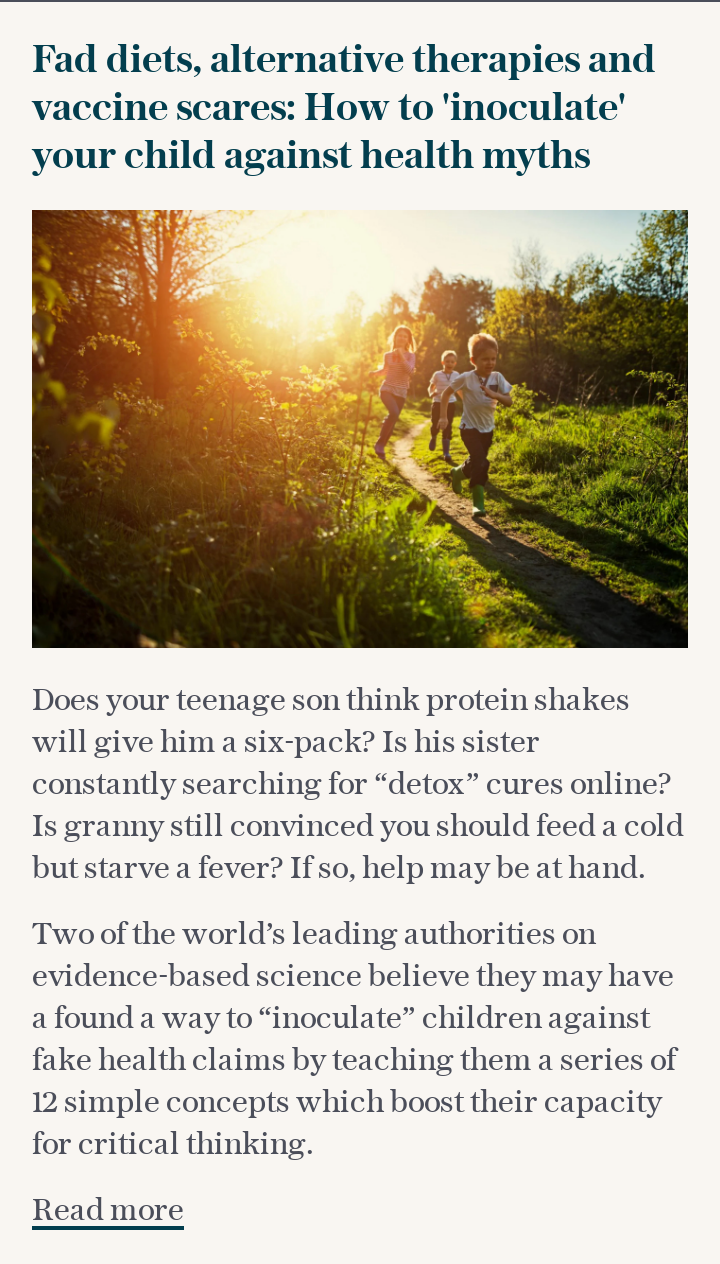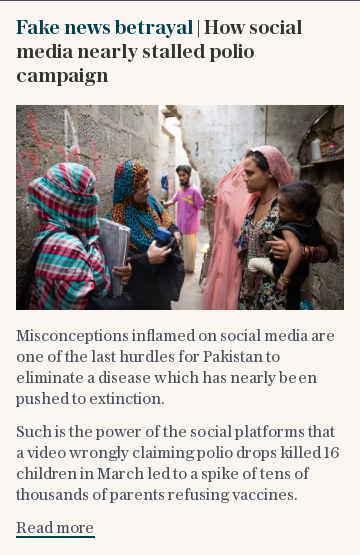Finland’s secret weapon in the fight against fake news: its kindergarten children

When 5G masts were attacked in May, the Government was left scratching its head. On New Year's Eve, when anti-vaccine campaigners shouted "Covid is a hoax" at doctors and nurses leaving London’s St Thomas’ hospital there was a collective grimace.
Last week, it was reported that almost half of the UK’s children complained they were being exposed to misinformation every day – more than one in 10 said they see it more than six times a day. This "infodemic", as the World Health Organisation calls it, is growing, but one country has been hot on its tail.
Finland recently topped a European annual index measuring resistance to misinformation and disinformation – the United Kingdom came in 12th – and the country puts its success down to targeting its children.
In 2014 the government embedded media literacy – which has been practised since the ‘70s – into the curriculum, teaching children from the age of six to read sources critically.
Teachers encourage children to evaluate and fact check websites, ask students to hunt for dubious news and find its source, and demonstrate how easy it is for statistics to be manipulated. It’s taught across all disciplines. In art children might see how images can be digitally altered; in history propaganda campaigns are analysed; and in science vaccine disinformation is put to the test.
But Finland has more reason than most to target disinformation. In 2014, when neighbouring Russia annexed Crimea, it began looking nervously at its noisy neighbour. Jussi Toivanen, chief communication specialist at the Finnish prime minister's office, says: “After the illegal annexation of Crimea by Russia in 2014, we saw an increased disinformation activity targeted at Finland. For example, attempts to rewrite our history and persecution of journalists and researchers who covered Russia critically.”
He says that in recent years there have been efforts to erode trust in society, democracy and its institutions, such as the media and the elections. Finland declared independence from Russia in 1917.
“There has been outright dissemination of disinformation relating, for example, to Covid-19, vaccines,” he adds.
Two weeks ago the Helsinki Times reported that mailboxes in Turku, southwest Finland, have been filling up with pages urging people not to wear face masks or get vaccinated against the virus.
And yet – little has got through. “[Attempts] have not resonated in our society. People are critical and they are aware of these kinds of attempts and activity. I can say that our society has been resilient,” Mr Toivanen notes.
According to a recent study, over 80 per cent of Finns say they are willing to take the Covid-19 vaccine. Compared to countries at the bottom of the index, only 53 per cent of people in Turkey say they will get the jab; in Montenegro it’s 45 per cent.

Mr Toivanen places the country’s success down to its teachers: “Our education system plays a very crucial role in combating disinformation.”
Minna Harmanen, counsellor for education and a former teacher, says that with increasing use of the internet and social media there’s a need for a more “profound literacy”.
“We don’t know who has made [online] texts, written them, or who is spreading them. The need to critically read has arisen quite a lot in recent years,” she says.
Her feelings on the topic are strong: “Propaganda, misinformation and ‘fake news’ have the potential to polarise public opinion, promote violent extremism and hate speech and ultimately, to undermine democracies and reduce trust in the democratic processes.”
Ms Harmanen says that Finnish schools have a tradition of analysing current affairs and using contemporary sources, such as news reports. They’ll run mock debates and write essays on how those debates went.
One activity asks students to find how the media in one country portrays people living in another, and what to believe from the coverage. Another asks children to identify their “social media bubble”, discuss how it affects attitudes towards people with differing opinions, and teaches them how to burst it.

It beds down into wider society too – Ed Miliband asked Vesa Häkkinen, the director of current affairs communications, on his podcast about how the anti-disinformation campaign works. Mr Häkkinen gave the example of a children’s television show in which a teddy-bear criticises news coverage.
Students are taught “to critically understand and assess information reported by all forms of media,” Ms Marmanen adds.
Heidi Pentikäinen, a teacher of Finnish language and literature, says that her teenage students are “very eager” to discuss media ethics.
She says that, as all classroom teaching uses digital materials, the children are reading online material for large portions of their day – “everybody has seen misinformation and everyone has heard something”.
Though the anti-vaxxer movement isn’t a big problem in the country, Ms Pentikäinen says that some Finnish parents have questioned whether to give their children the HPV vaccine, but were swiftly set straight by their own daughters.
The lessons are ever-more important as the children are bilingual, she says. “Children learn English very well, and so all cultures are available to them. They may see English stars or influencers who spread misinformation – it is very important that children can tell the difference from an influencer’s [opinion] and the news.”
The principles taught are followed throughout a child’s education. “Teaching and learning about media literacy and critical thinking is a life-long journey. It starts at kindergartens and continues at elementary schools, high schools and universities,” Mr Toivanen says.

Even then, critical thinking education doesn’t end. Since 2016, more than 10,000 civil servants, journalists and NGOs have trained in building resilience to disinformation. An NGO also launched a fact-checking service, Faktabaari (Fact Bar) for the 2014 European elections for adults and children alike – it’s run by volunteers and creates voter literacy kits for schools and the wider public. In spring, the government will launch a nationwide communications campaign against disinformation as part of their municipal election preparations.
Asked about if the learning will ramp up, Ms Harmanen says: “It has to strengthen in the coming years, it’s more important now. It’s not merely literacy, but how you are part of society, how you are in your neighbourhoods and in school. It’s part of being in society – it’s democracy.”
Mr Toivanen says countering disinformation “is a daily activity for us” and that “no one wins this battle alone”.

